🛫🔭🌌
🛫🔭🌌
10 Amazing Space Discoveries by the World’s Largest Flying Observatory

On the night of May 26, 2010, the Stratospheric Observatory for Infrared Astronomy, or SOFIA, the world’s largest flying observatory, first peered into the cosmos. Its mission: to study celestial objects and astronomical phenomena with infrared light. Many objects in space emit almost all their energy at infrared wavelengths. Often, they are invisible when observed in ordinary, visible light. Over the last decade, the aircraft’s 106-inch telescope has been used to study black holes, planets, galaxies, star-forming nebulas and more! The observations have led to major breakthroughs in astronomy, revolutionizing our understanding of the solar system and beyond. To celebrate its 10 years of exploration, here’s a look at the top 10 discoveries made by our telescope on a plane:
The Universe’s First Type of Molecule

Scientists believe that around 100,000 years after the big bang, helium and hydrogen combined to make a molecule called helium hydride. Its recent discovery confirms a key part of our basic understanding of the early universe.
A New View of the Milky Way

More than a pretty picture, this panorama of cosmic scale reveals details that can help explain how massive stars are born and what’s feeding our Milky Way galaxy’s supermassive black hole.
When Planets Collide

A double-star system that is more than 300 light-years away likely had an extreme collision between two of its rocky planets. A similar event in our own solar system may have formed our Moon.
How A Black Hole Feasts
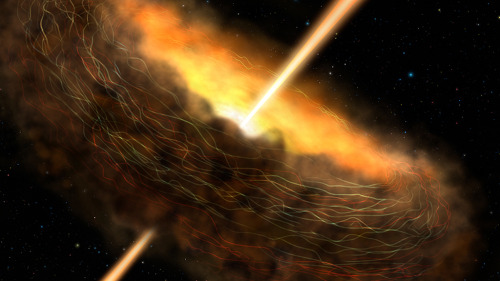
Fear not, the dark, my friend. And let the feast begin! Magnetic fields in the Cygnus A galaxy are trapping material where it is close enough to be devoured by a hungry black hole.
Somewhere Like Home

The planetary system around Epsilon Eridani, a star located about 10 light-years away, has an architecture remarkably similar to our solar system. What’s more, its central star is a younger, fainter version of our Sun.
A Quiet Place

Black holes in many galaxies are actively consuming material, but our Milky Way galaxy’s central black hole is relatively quiet. Observations show magnetic fields may be directing material around, not into, the belly of the beast.
The Great Escape

Ever wonder how material leaves a galaxy? The wind flowing from the center of the Cigar Galaxy is so strong it’s pulling a magnetic field — and the mass of 50 to 60 million Suns — with it.
Exploding Star, New Worlds

What happens when a star goes boom? It turns out that supernova explosions can produce a substantial amount of material from which planets like Earth can form.
Stellar Sibling Rivalry

They say siblings need time and space to grow, but here’s one that really needs some room. A newborn star in the Orion Nebula is clearing a bubble of space around it, preventing any new luminous family members from forming nearby.
Clues to Life’s Building Blocks

Radiation from stars is making organic molecules in nebula NGC 7023, also known as the Iris Nebula, larger and more complex. The growth of these molecules is one of the steps that could lead to the emergence of life under the right circumstances.
SOFIA is a modified Boeing 747SP aircraft that allows astronomers to study the solar system and beyond in ways that are not possible with ground-based telescopes. Find out more about the mission at www.nasa.gov/SOFIA.
Make sure to follow us on Tumblr for your regular dose of space: http://nasa.tumblr.com
More Posts from Monstrous-mind and Others

🔭🌌🍂🍁

Stars and Dust in Corona Australis (NASA)






My favorite season



















🔭🌃🌌🍂🍁🐈
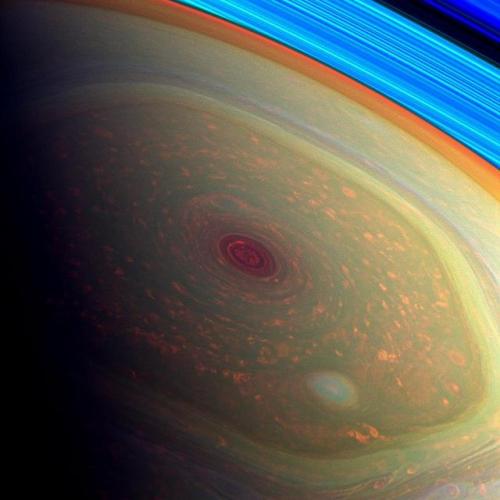
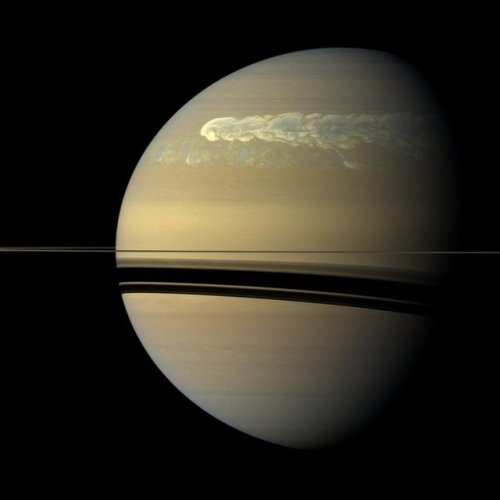
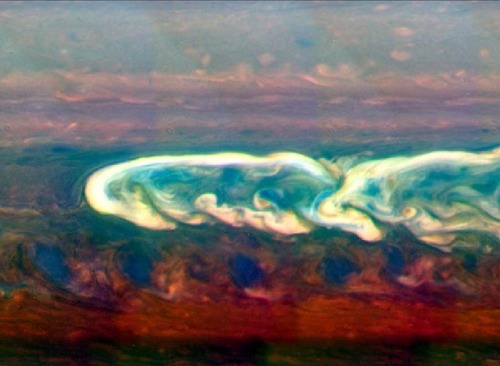



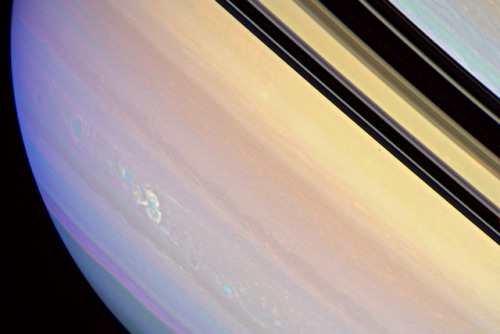

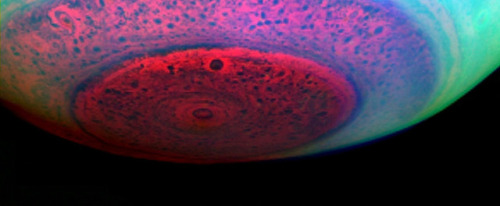
Saturn’s atmosphere exhibits a banded pattern similar to Jupiter’s, but Saturn’s bands are much fainter and are much wider near the equator. The nomenclature used to describe these bands is the same as on Jupiter. Saturn’s finer cloud patterns were not observed until the flybys of the Voyager spacecraft during the 1980s. Since then, Earth-based telescopy has improved to the point where regular observations can be made. The composition of the clouds varies with depth and increasing pressure.
The winds on Saturn are the second fastest among the Solar System’s planets, after Neptune’s. Voyager data indicate peak easterly winds of 500 m/s (1,800 km/h).
Thermography has shown that Saturn’s south pole has a warm polar vortex, the only known example of such a phenomenon in the Solar System. Whereas temperatures on Saturn are normally −185 °C, temperatures on the vortex often reach as high as −122 °C, suspected to be the warmest spot on Saturn.
Credit: NASA/JPL-Caltech/Space Science Institute and Kevin M. Gill
🍂🍁🏔️🌨️🌌

Mark Basarab

By jayeffex
🍂🍁🎃🍁🍂🌄










Autumn Colours
↳ Orange
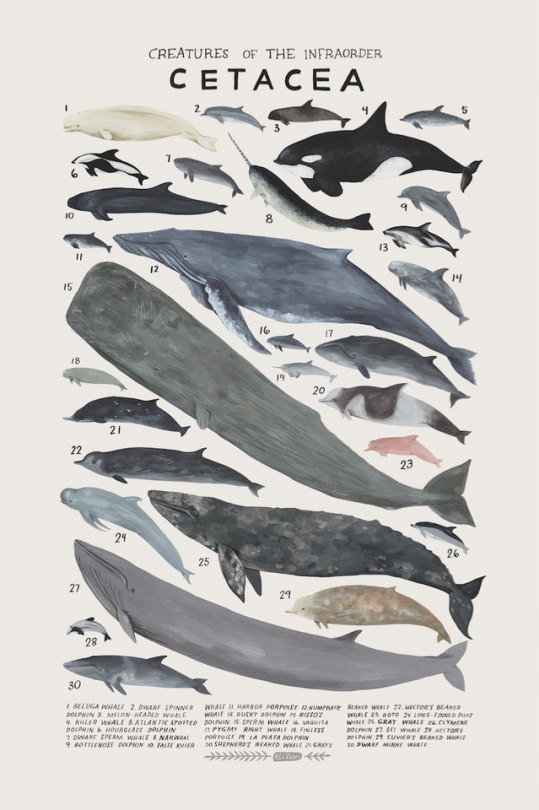

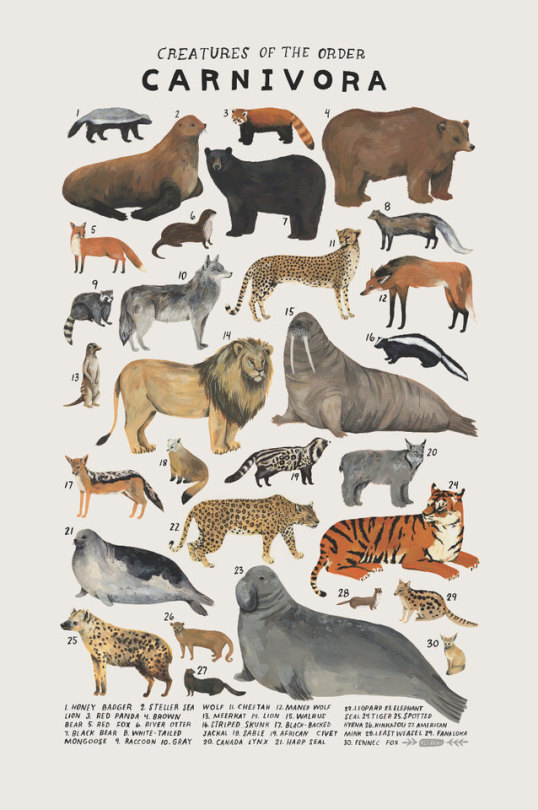

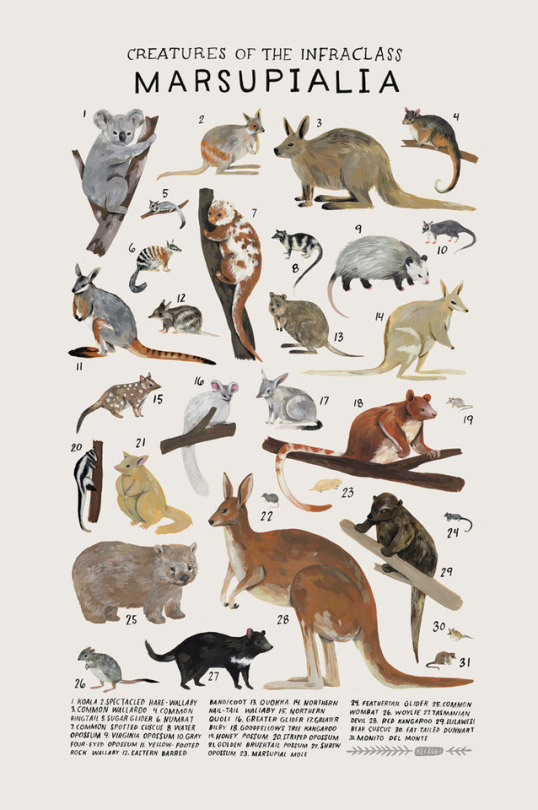





Science Posters by Kelsey Oseid on Etsy
🎃🍂🍁🌌☕
Halloween cat
-
 cookiehat liked this · 8 months ago
cookiehat liked this · 8 months ago -
 gsunny6 liked this · 2 years ago
gsunny6 liked this · 2 years ago -
 raggedybatman liked this · 2 years ago
raggedybatman liked this · 2 years ago -
 handmeyours liked this · 3 years ago
handmeyours liked this · 3 years ago -
 galaxyharrow reblogged this · 3 years ago
galaxyharrow reblogged this · 3 years ago -
 fairyqueen996 reblogged this · 3 years ago
fairyqueen996 reblogged this · 3 years ago -
 kvaleksy liked this · 3 years ago
kvaleksy liked this · 3 years ago -
 raven6211 liked this · 3 years ago
raven6211 liked this · 3 years ago -
 adricofalzarius liked this · 3 years ago
adricofalzarius liked this · 3 years ago -
 sweetandsadsblog liked this · 3 years ago
sweetandsadsblog liked this · 3 years ago -
 mischief02 liked this · 3 years ago
mischief02 liked this · 3 years ago -
 adm-starblitzsteel-4305 reblogged this · 4 years ago
adm-starblitzsteel-4305 reblogged this · 4 years ago -
 quraninyou liked this · 4 years ago
quraninyou liked this · 4 years ago -
 infinityunitblogblogger reblogged this · 4 years ago
infinityunitblogblogger reblogged this · 4 years ago -
 unlikelyanonymous liked this · 4 years ago
unlikelyanonymous liked this · 4 years ago -
 rage-r liked this · 4 years ago
rage-r liked this · 4 years ago -
 lock-0n liked this · 4 years ago
lock-0n liked this · 4 years ago -
 thelittleoxymoron liked this · 4 years ago
thelittleoxymoron liked this · 4 years ago -
 micaaaa-h liked this · 4 years ago
micaaaa-h liked this · 4 years ago -
 theserpentandthesword reblogged this · 4 years ago
theserpentandthesword reblogged this · 4 years ago -
 hurluberlu31 liked this · 4 years ago
hurluberlu31 liked this · 4 years ago -
 sleepeatdestroyrepeat reblogged this · 4 years ago
sleepeatdestroyrepeat reblogged this · 4 years ago -
 neon-burning liked this · 4 years ago
neon-burning liked this · 4 years ago -
 eldrichlibrarian reblogged this · 4 years ago
eldrichlibrarian reblogged this · 4 years ago -
 thomasswift85 reblogged this · 4 years ago
thomasswift85 reblogged this · 4 years ago -
 foramadmaninabox reblogged this · 4 years ago
foramadmaninabox reblogged this · 4 years ago -
 fenwyld liked this · 4 years ago
fenwyld liked this · 4 years ago -
 starwalkerofthedepths reblogged this · 4 years ago
starwalkerofthedepths reblogged this · 4 years ago -
 heofthebalance reblogged this · 4 years ago
heofthebalance reblogged this · 4 years ago -
 angel-0ver-you reblogged this · 4 years ago
angel-0ver-you reblogged this · 4 years ago -
 angel-0ver-you liked this · 4 years ago
angel-0ver-you liked this · 4 years ago -
 barefootedd liked this · 4 years ago
barefootedd liked this · 4 years ago -
 alittlewitchyplace reblogged this · 4 years ago
alittlewitchyplace reblogged this · 4 years ago -
 cashmoneyravestars liked this · 4 years ago
cashmoneyravestars liked this · 4 years ago -
 stellarmuffin liked this · 4 years ago
stellarmuffin liked this · 4 years ago -
 katdnsm liked this · 4 years ago
katdnsm liked this · 4 years ago
My ambition is handicapped by laziness. -C. Bukowski Me gustan las personas desesperadas con mentes rotas y destinos rotos. Están llenos de sorpresas y explosiones. -C. Bukowski. I love cats. Born in the early 80's, raised in the 90's. I like Nature, Autumn, books, landscapes, cold days, cloudy Windy days, space, Science, Paleontology, Biology, Astronomy, History, Social Sciences, Drawing, spending the night watching at the stars, Rick & Morty. I'm a lazy ass.
222 posts